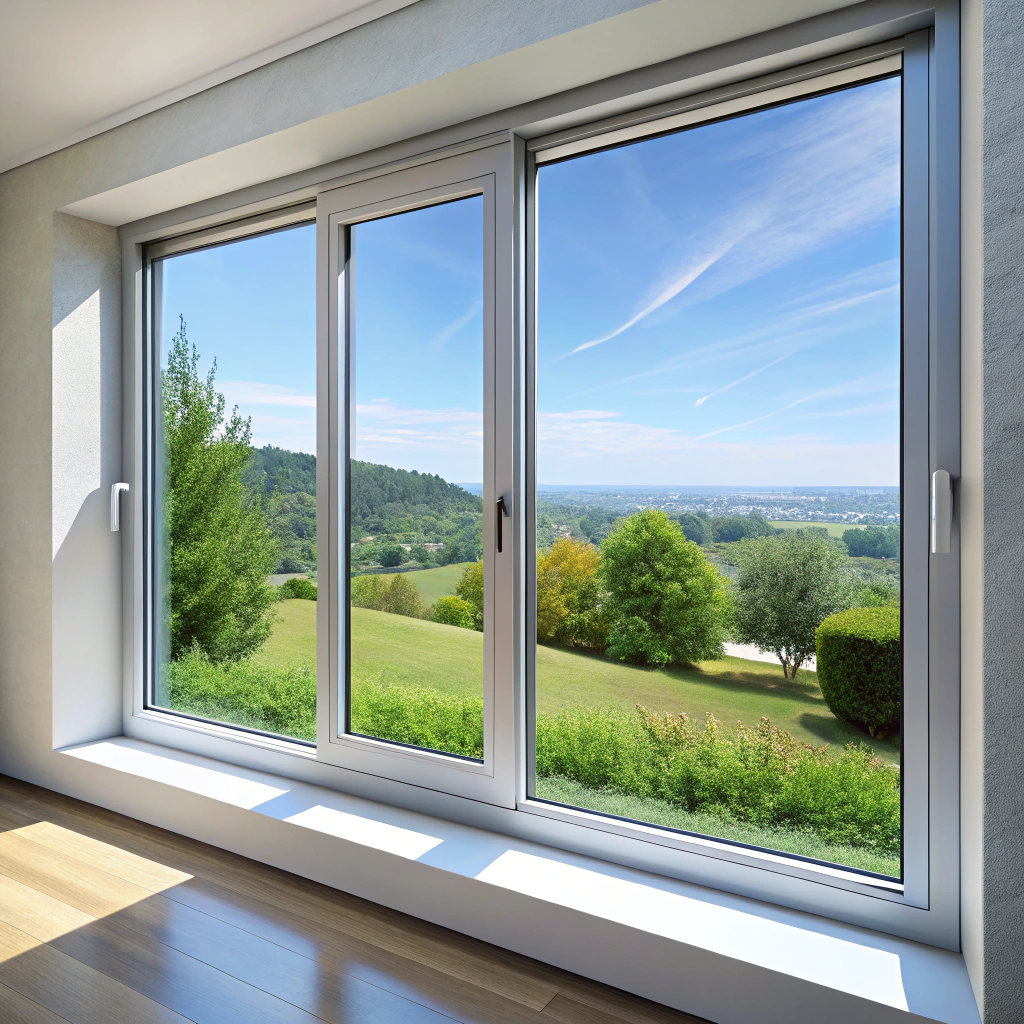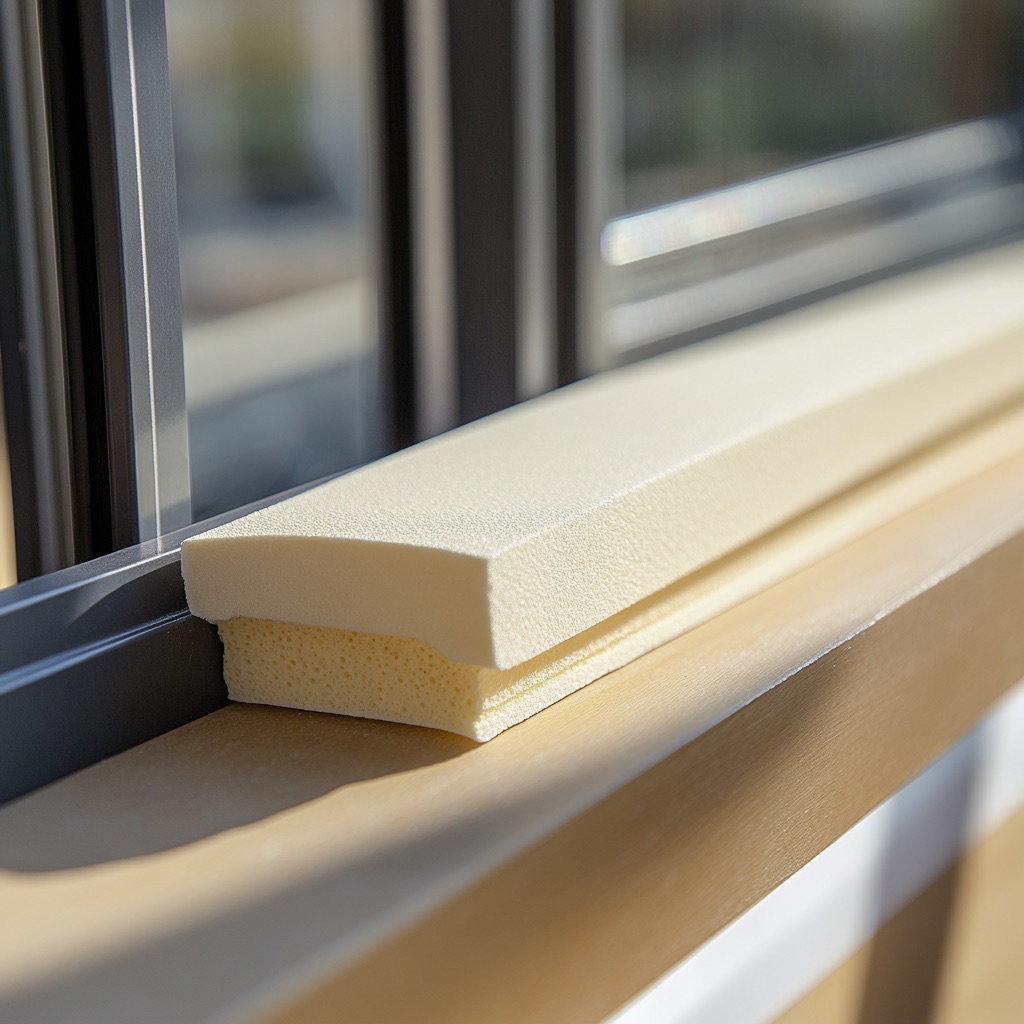Understanding window code requirements is crucial because they ensure both safety and energy efficiency in home designs.
Key takeaways:
- Window code requirements ensure safety and energy efficiency.
- I-codes harmonize building standards across states and municipalities.
- Design loads determine a window’s ability to withstand forces.
- Windows must comply with wind load specifications based on location.
- Emergency escape windows have specific size and accessibility requirements.
Adoption of I-codes

Understanding the intricacies of I-codes is essential for ensuring compliance in window installations. These comprehensive building standards, developed by the International Code Council (ICC), serve as the foundation for local building regulations across the United States.
- Harmonization: The integration of I-codes simplifies code enforcement by creating uniformity across state and municipal lines.
- Adoption Process: Local governments typically review and adopt I-codes as part of their building codes, often with amendments to address regional needs.
- Updating Cycle: I-codes are revised on a triennial basis, offering the opportunity for incorporating advancements in technology and safety.
- Impact on Window Installation: For windows, these codes dictate specifications for size, egress, glass type, and installation methods, ensuring each component aligns with current safety and energy conservation standards.
Homeowners, builders, and industry professionals must remain informed of the latest I-code editions as they significantly impact window selection, installation procedures, and compliance requirements.
DESIGN LOADS

Design loads determine a window’s ability to withstand various forces, ensuring longevity and safety.
Wind Loads: Depending upon geographic location, buildings are subject to differing wind speeds. Windows must be designed to resist these forces, with specifications detailed in local codes typically referencing ASCE 7 standards for minimum design loads.
Dead Loads: These are the constant, static forces a window experiences, primarily its own weight. Proper anchoring and support ensure that the window remains secure and functional over time.
Impact Resistance: In areas prone to severe weather such as hurricanes, building codes might require windows to withstand flying debris. This is achieved through materials like tempered or laminated glass, and adherence to test standards like ASTM E1996.
Every window’s design load rating is a critical aspect of its performance and dictates the materials and construction needed to meet or exceed those benchmarks. Choose windows that align with the specific loads they will encounter in their intended setting for optimal performance.
Wind Loads
Windows must be designed to withstand specific wind pressures, which vary by geographic region and building type. These pressures are determined based on the local wind speed, exposure category, and building height. The American Society of Civil Engineers Standard ASCE 7 provides guidelines for calculating wind loads.
Manufacturers typically test their windows to ensure compliance with these standards using one of two methods:
- Static Test: A consistent force is applied to the window to simulate wind pressure.
- Dynamic Test: Simulates wind conditions with rapid changes in pressure, akin to real wind gusts.
It’s important for building professionals and homeowners to verify the design pressure rating (DP) of windows, ensuring they meet or exceed the local code requirements. Design pressure ratings not only relate to wind resistance but also to the window’s structural performance and water penetration resistance. Proper window selection and installation will contribute to the building’s overall resilience to wind forces.
Dead Loads
Dead loads refer to the static forces exerted by the weight of the physical window materials and any permanent fixtures attached to the window. It’s essential for framing structures and window components to support these constant loads.
– Structural integrity: Frames must be built or selected to endure their own weight plus any attached hardware without warping or failing.
– Material choice: Heavier materials, like metal or certain wood species, increase dead loads, requiring reinforced support systems.
– Professional calculations: Engineers or architects typically determine the necessary support to counteract dead loads as part of the design process.
– Installation techniques: Properly securing window frames to the building’s structure helps distribute the dead load evenly, preventing structural damage.
– Inspection and compliance: Building inspections often include evaluating if the window installation adheres to local code requirements regarding dead load support.
Impact Resistance
Windows in coastal areas or where high winds and hurricanes are common must withstand flying debris and intense pressure. They’re termed “impact-resistant” due to special design features:
- 1. Laminated glass, consisting of a strong plastic interlayer between glass panes, prevents shattering.
- 2. Tempered glass, which breaks into small, less harmful pieces rather than jagged shards.
- 3. Reinforced frames boost the window’s ability to handle high-stress conditions, adding to the overall strength.
- 4. Specific anchoring systems ensure the window unit remains intact with the building structure during violent storms.
- 5. Testing criteria involve shooting a missile-like projectile at the window and subjecting it to thousands of cycles of positive and negative pressure to simulate storm conditions.
Local building codes outline the necessary impact resistance levels for windows, reflecting regional weather patterns. Always check with local code enforcement for these specific requirements.
Emergency Escape and Rescue Openings
Under the International Residential Code (IRC), certain windows must function as escape routes in case of an emergency. Here are key points to understand these requirements:
1. Size Matters: The opening must have a minimum net clear opening of 5.7 square feet, allowing occupants to crawl through. For windows located at or below the ground level, the minimum is reduced to 5 square feet.
2. Height and Width Specifications: The opening’s minimum height should be 24 inches, and the minimum width must measure at least 20 inches.
3. Access to the Ground: Windows should have a maximum sill height of 44 inches from the interior floor, enabling easier egress.
4. Operable from the Inside: Openings must be operable from the inside without keys or tools, ensuring quick and unobstructed escape.
5. Basement Considerations: Basements with habitable space and every sleeping room must include at least one emergency escape and rescue window.
6. Window Wells: If a window is below ground level, a window well is required. This should allow the window to fully open and provide a clear area of at least 9 square feet with a minimum horizontal projection and width of 36 inches.
7. Grates or Covers: If window wells have grates or covers, they must be easily removable or openable from the inside without keys or tools.
Meeting these requirements is crucial for safety and compliance with local building codes. Consult a professional for precise guidance tailored to your specific situation since codes may vary by location.
Minimum Window Sill Heights
For safety, particularly in homes with children, the minimum sill height for operable windows is of paramount importance. Building codes typically require that windows situated above a certain floor height must have sills installed at least 24 inches (61 cm) above the floor. This measure helps to prevent accidental falls.
However, an exception is often made for windows that do not open more than 4 inches (10 cm) or those with window guards or fall prevention devices. These specifics can vary by locality, so consult your local building codes for exact requirements.
Furthermore, windows designated for emergency exits, such as egress windows in bedrooms, must fulfill additional height, width, and operational criteria to ensure occupants can safely exit during an emergency.
Window Installation
Proper window installation is crucial to ensure functionality, safety, and energy efficiency. It must comply with the manufacturer’s instructions and the local building codes, which typically incorporate standards from the American Society for Testing and Materials (ASTM).
Flashing & Weatherproofing: To prevent water infiltration, flashing must be correctly installed around the window perimeter. Sealants or house wraps may also be involved, following the ASTM E2112 standard.
Anchoring: Windows should be securely anchored to the building structure. Fasteners must be of appropriate type, material, and spacing as specified by the window manufacturer.
Plumb, Level, Square Installation: Ensuring that the window is plumb (vertically level), level (horizontally even), and square (corners at 90 degrees) is key for operable windows to function correctly.
Insulation: Gaps between the window frame and the building envelope should be insulated. This can be done with foam insulation or other materials that provide a tight seal.
Air Leakage Resistance: Properly installing windows to limit air infiltration is integral to energy conservation. Installation practices should meet the criteria set by codes like the International Energy Conservation Code (IECC).
Each of these points is critical to meeting code requirements and performance expectations for newly installed windows.
Mullions
Mullions serve as structural supports and aesthetic components in window design. In adherence to building codes, they must withstand the forces acting upon windows, including the window’s own weight and pressures from environmental factors like wind. Building codes specify that the strength of mullions must be sufficient to resist these loads without failing. Analysis of mullion strength typically involves calculations based on the anticipated wind load, which varies by geographic location and the height at which the window is installed.
Codes also dictate the need for mullions to contribute to the overall thermal performance of windows. This means that they should minimize thermal bridging, which can lead to heat loss. Energy-efficient mullions are designed to maintain the window’s insulation effectiveness, aligning with energy performance requirements.
In retrofit projects, replacing existing windows often necessitates evaluating current mullions for code compliance. If they are not up to current standards, renovations may require reinforcement or replacement of these elements to ensure safety, performance, and legality of the window installation.
Skylights and Sloped Glazing
Skylights and sloped glazing systems add natural light to a home but must adhere to specific code requirements to ensure safety and energy efficiency.
1. Safety Glazing: Glass in skylights must be safety-glazed to reduce injury in case of accidental breakage.
2. Fall Protection: Bars, screens, or other significant barriers are mandated to prevent falls through skylights, especially in accessible areas.
3. Load and Strength Considerations: These structures are subject to the same load requirements as vertical windows, including snow load, wind resistance, and dead load. Materials must withstand these pressures without failure.
4. Energy Performance: Similar to vertical windows, skylights must meet U-factor and Solar Heat Gain Coefficient (SHGC) ratings appropriate to the climate zone as specified by the International Energy Conservation Code (IECC).
5. Water Drainage: Proper design to divert water away from skylights is crucial. This ensures water does not collect and potentially seep into the building envelope, causing moisture damage.
Keeping these points in mind helps ensure skylight installations provide the desired aesthetic and functional benefits while maintaining the integrity of the home’s structure and energy performance.
ENERGY PERFORMANCE
Energy performance in windows is an essential aspect of code requirements, designed to reduce energy consumption and enhance the comfort of building occupants. Key points include:
Compliance Paths: There are various methods to demonstrate a window’s energy efficiency, such as prescriptive, performance, and total building performance criteria. The chosen path must align with local codes, which are often based on the IECC or similar standards.
U-Factor and Solar Heat Gain Coefficient (SHGC): U-factor measures how well a window insulates, with lower values indicating better performance. SHGC quantifies the solar radiation admitted through a window. Codes specify maximum or minimum acceptable values, balancing heat retention in colder climates and heat rejection in warmer regions.
Air Leakage: Windows must meet specified air leakage criteria to prevent excess energy loss. This ensures a more controlled interior environment and decreased strain on heating and cooling systems.
The ERI Path: The Energy Rating Index (ERI) path offers an alternative compliance strategy by assessing a home’s overall energy efficiency, including window performance, in comparison to a reference design.
By adhering to energy performance codes, windows contribute to a building’s overall energy efficiency, leading to cost savings and environmental benefits over time.
Compliance Paths
When meeting energy performance requirements, homeowners and builders can choose from several compliance paths, each providing a different approach to achieving code conformance:
1. Prescriptive Path: This straightforward method involves adhering to a set of specific requirements listed in the code, such as insulation levels, window types, and glazing factors. It’s akin to following a recipe with defined ingredients and quantities.
2. Performance Path: This more flexible approach allows for trade-offs between different building components. For example, if a window has a slightly lower insulation value, it might be offset by increased insulation in the walls. This path requires the use of approved energy modeling software and demonstrates that the proposed design performs as well as the prescriptive standard.
3. UA Alternative: The UA (Underlying Assumptions) alternative is a mathematical calculation that provides an aggregate thermal performance value for the entire building. This number must not exceed the UA of the building as stipulated by the code.
4. Whole Building Simulation: Reserved typically for complex or unconventional buildings, this comprehensive simulation models the building’s energy consumption using detailed software. It must show that the proposed design consumes no more energy than the baseline design.
Each path offers distinct advantages depending on project specifics, cost implications, and design flexibility. Choosing the most appropriate path ensures both code compliance and potential cost savings over the building’s lifetime.
The ERI Path
Navigating the Energy Rating Index (ERI) Path for window compliance provides a flexible option under the most recent energy codes. A lower ERI score indicates a more energy-efficient home.
Here are key points to understand ERI:
- It’s a numerical scale where a standard reference design has an ERI of 100, and a net-zero energy home has an ERI of 0.
- Windows play a significant role in a home’s ERI; energy-efficient windows can substantially lower the ERI score.
- The ERI accounts for energy consumption and savings from all building components, including heating, cooling, water heating, lighting, and appliances.
- The ERI path emphasizes performance over prescriptive window specifications, allowing for more design freedom as long as the energy goals are met.
- Builders and designers often use software to simulate a home’s ERI, factoring in the windows’ U-factor, solar heat gain coefficient, and air leakage.
- Final ERI compliance is verified through third-party testing to ensure the constructed home meets the projected energy performance.
Replacement Windows
If you’re renovating a home, understanding code requirements for replacement windows ensures both safety and efficiency. Often, replacement window projects must meet current codes even if the original windows did not.
Key points to consider:
- Size: Replacements must match or improve upon the clear opening size of the original window, essential for egress in emergencies.
- Energy Efficiency: Upgrades are expected to meet energy codes pertinent to your region. Check for U-factor and Solar Heat Gain Coefficient (SHGC) ratings that comply with local requirements. Make sure you follow permit rules for home upgrades.
- Glazing: Safety glazing is necessary in areas prone to impact, such as low windows or those near doors.
- Historic Structures: Special provisions may apply for historic buildings, intended to preserve aesthetic integrity while improving performance.
Always verify with local building authorities, as they might have amendments specific to your area that could affect your replacement project.
Code Cycles
Building codes evolve to reflect new safety standards, technological advancements, and energy efficiency goals. They typically update on a three-year cycle, encouraging gradual improvement and allowing the industry to adapt.
During each cycle:
- Proposals for code changes are submitted by industry professionals, interest groups, and code officials.
- The changes are reviewed and debated in public forums, ensuring transparency and community involvement.
- Codes undergo a rigorous approval process, including committee reviews and voting by governmental consensus bodies.
- Once adopted, local jurisdictions often have a grace period to transition, providing time for builders and suppliers to comply with the new standards.
Staying informed on the current cycle is crucial for compliance and planning future construction projects. It also aids in anticipating upcoming changes and understanding the rationale behind new requirements.
FAQ
What are the general requirements for windows?
Windows must possess a light transmitting area of at least 10% of the floor area for natural light provision, while roof lights should offer a light transmitting area of at least 3% of the floor area for the same purpose.
What is the building code for windows in Ontario?
In Ontario, the building code for windows stipulates that they should be easy to open from the inside without tools, opening to a minimum area of 0.35 m², with each dimension being at least 380 mm, and be able to stay open without additional support.
What is the code for a window well in Ontario?
In Ontario, the building code requires that the window well should extend 550 mm beyond the fully open window or wall and the bottom of the window should not be more than 1 m above the ground.
What is the egress code for a window in Canada?
In Canada, the egress code stipulates that a window must provide an unobstructed opening having a minimum area of 3.77 ft2 (0.35 m2), and no dimension less than 15″(380mm).
What are the specific guidelines for basement windows in Ontario?
In Ontario, the guidelines state that basement windows used for egress must have a minimum openable area of 3.8 square feet, a minimum openable width of 15 inches and a height of 18 inches.
How is window safety glass regulated by Canadian building codes?
In Canada, the building codes mandate the use of safety glass in areas at risk of human impact, such as doors, sliding doors, showers, bathtubs, hot tubs, steam rooms, and windows close to floor level.
What are the minimum size requirements for bedroom windows in Ontario?
In Ontario, the minimum size for a bedroom window is 5.0 sq. ft. for an opening portion and at least 50% of the required window must be openable.
Recap


